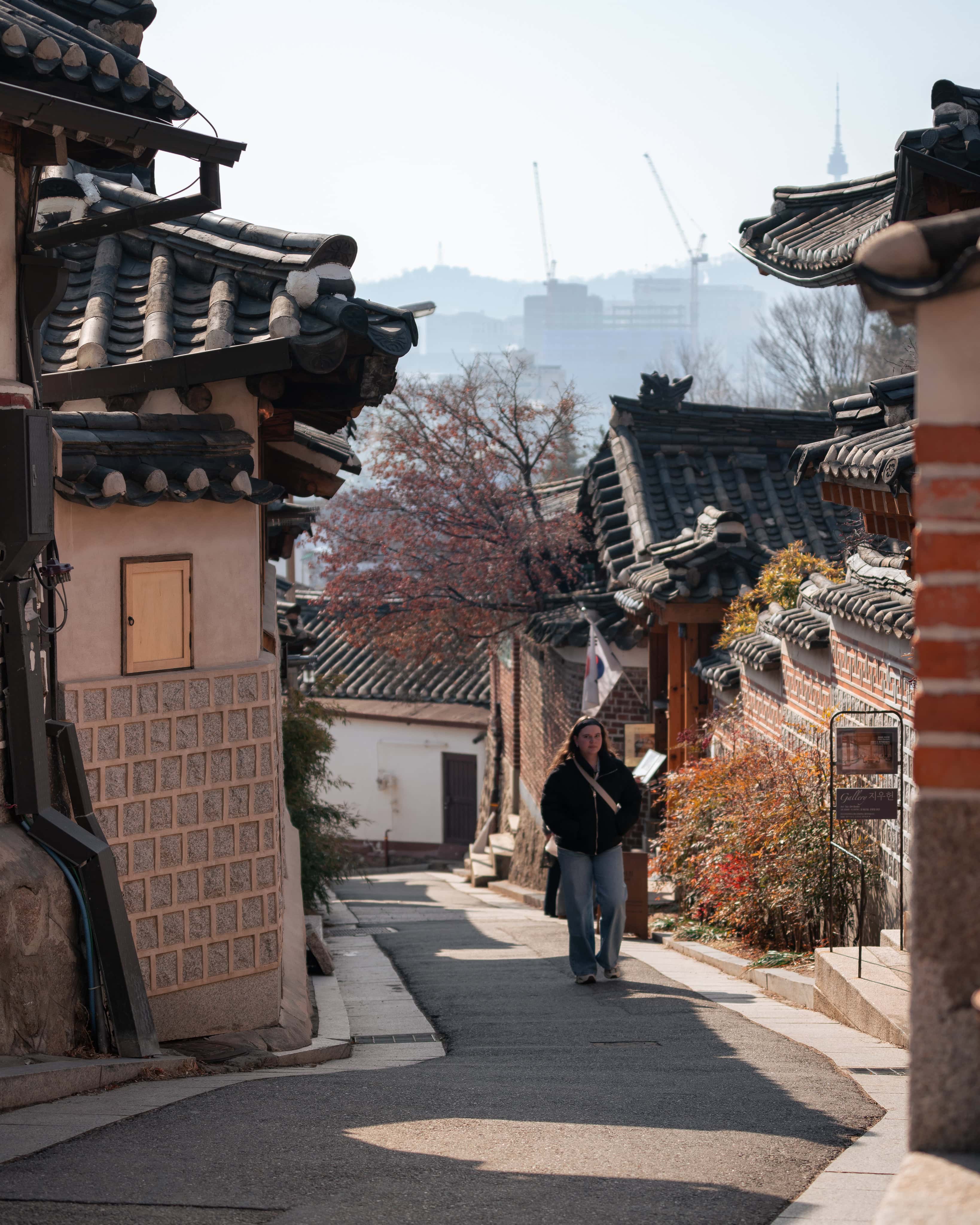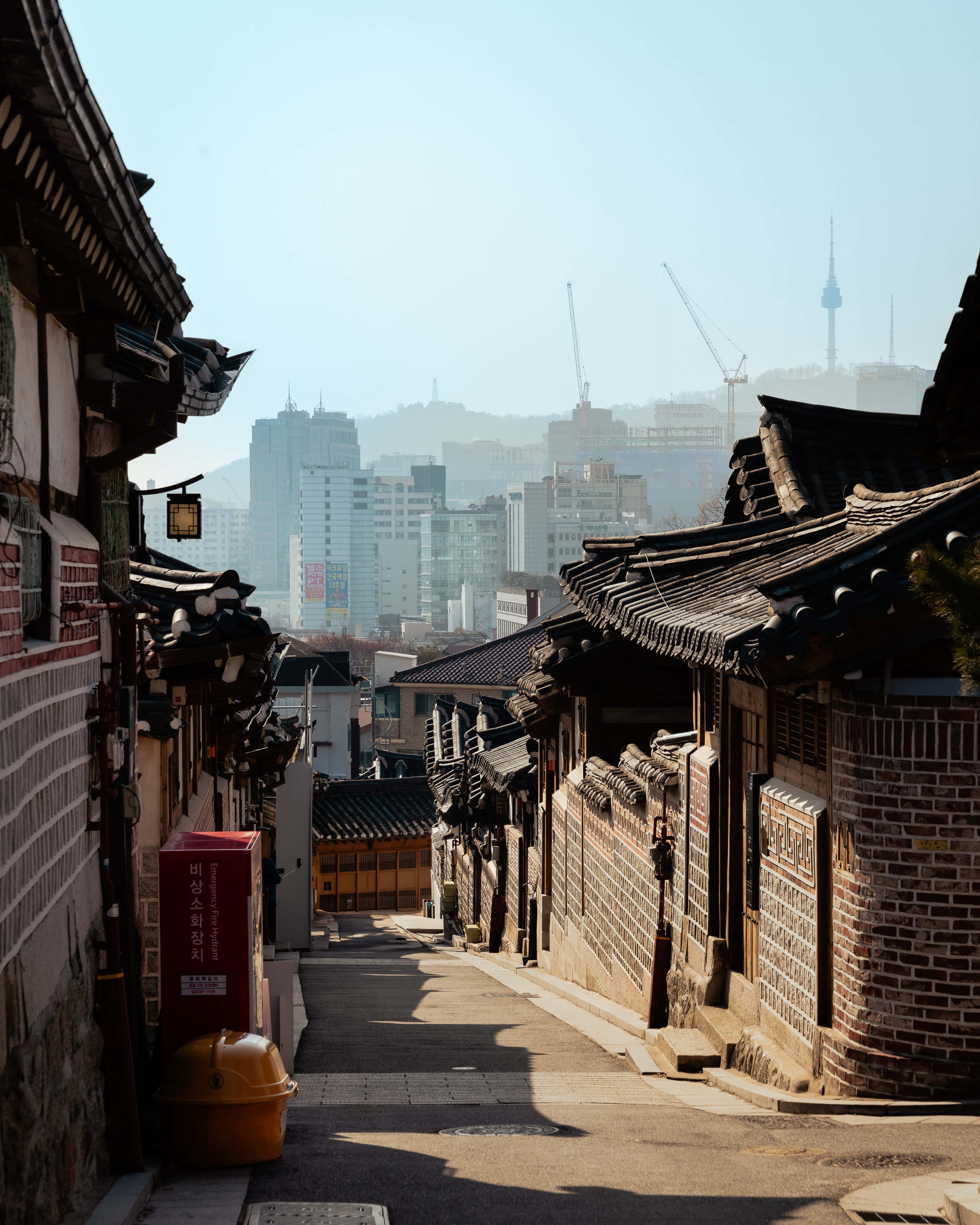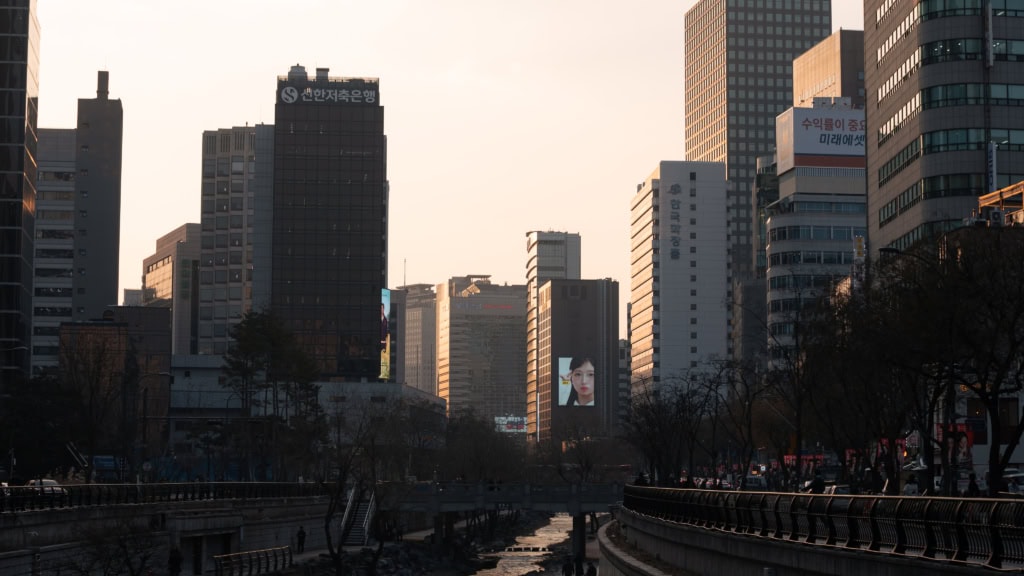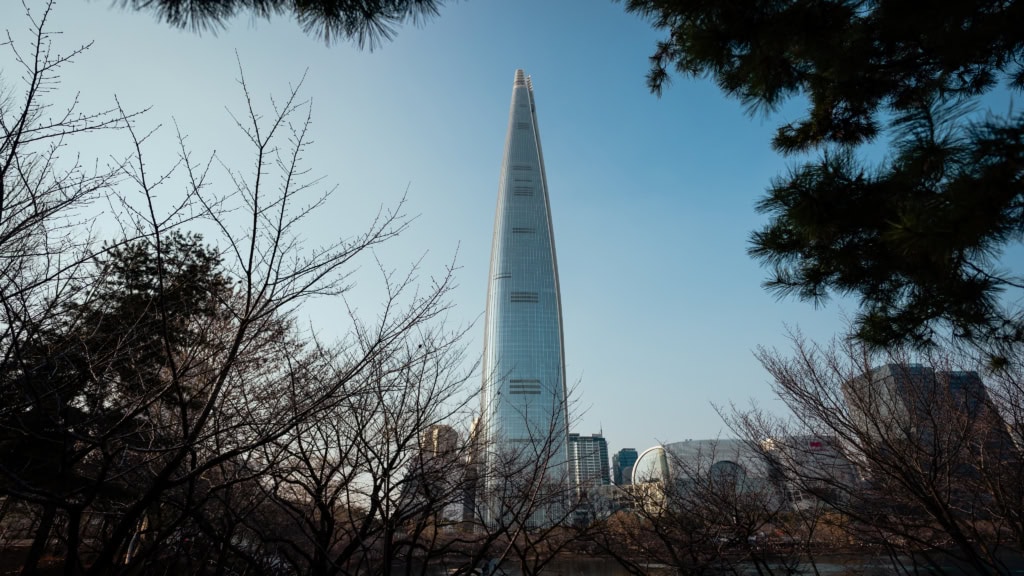Located in the vibrant heart of Seoul, Bukchon Hanok Village transports visitors back in time. A labyrinth of traditional Korean houses, known as hanok, stretches between modern skyscrapers and busy shopping streets. These hanok have been built in the traditional style or restored to their original splendour. Unlike an open-air museum, Bukchon is a living neighbourhood where the charm of centuries-old architecture blends with the everyday lives of the capital’s residents. If you want to experience authentic Korea, away from neon lights and shopping centres, Bukchon is a cultural gem that uniquely combines history, craftsmanship, and lifestyle.
Location and how to get there
Bukchon Hanok Village is located in the Jongno-gu neighbourhood, in the heart of Seoul, nestled between the Gyeongbokgung and Changdeokgung palaces. The nearest underground station is Anguk (Line 3, Exit 3). From there, the Bukchon Traditional Culture Centre is only a few minutes’ walk away. This is an ideal starting point for exploring the area, offering maps, information, and cultural programmes that provide visitors with a comprehensive insight into the district’s history and architecture.
Historical background
During the Joseon dynasty, Bukchon was a residential neighbourhood for high-ranking officials and nobles. According to a 1906 family register, 43.6% of the population belonged to this social class. In the early 20th century, during the Japanese colonial period, developers such as Chŏng Segwŏn promoted the hanok concept, advocating the preservation of traditional Korean architecture in response to the increasing Japaneseisation of cities. These modernised hanok were equipped with amenities such as glass windows and electricity, enabling people from a range of economic backgrounds to move into the area.
Photo spots and views
Bukchon Hanok Village is a photographer’s paradise. The narrow streets, adorned with gracefully curved tiled roofs, provide an abundance of picturesque vistas, particularly at sunrise or during the golden hour in the late afternoon. A popular photography location is along Bukchon-ro 11-gil, approximately halfway up the street between the traditional houses, where you can enjoy a view of the city. Other vantage points in the neighbourhood, such as certain cafés or small platforms along the slopes, also offer views stretching as far as Bukhansan. Visitors should take their time strolling through the side streets, as every bend in the road reveals new photogenic corners reflecting the harmony between tradition and modernity.
Sustainable tourism and community protection
As Bukchon Hanok Village is a vibrant residential neighbourhood, sustainable tourism is crucial. In recent years, the Seoul Metropolitan Government and local organisations have worked to control visitor numbers and preserve the area’s cultural heritage. For instance, information signs have been erected to encourage appropriate behaviour, and guided tours with a limited number of participants are offered. Some hanoks have been converted into guesthouses that focus on sustainability and providing an authentic experience.
Practical tips for visitors
- Admission: There is no charge to visit the village.
- Opening hours: As it is a residential neighbourhood, there are no fixed opening hours. However, it is recommended that you visit between 9 am and 5 pm to respect the residents’ privacy.
- Respectful behaviour: Visitors should keep quiet, especially in the early morning and late evening, and respect the privacy of neighbouring residents. Do not enter private property without permission.
Bukchon Hanok Village is a living testament to Korean history and culture. Its traditional architecture, vibrant craftsmanship and culinary offerings ensure an unforgettable visit. For travellers seeking an authentic Korean experience, Bukchon is an unmissable destination.














